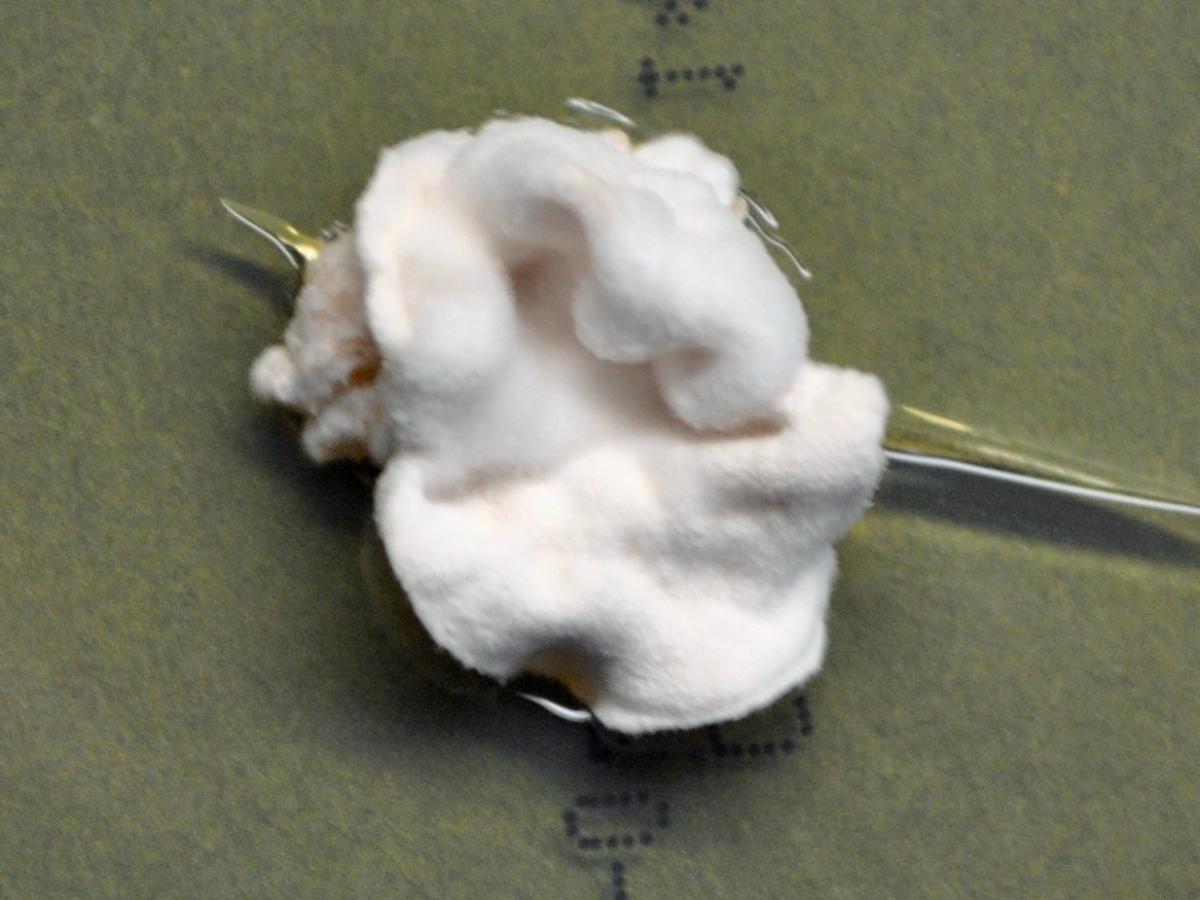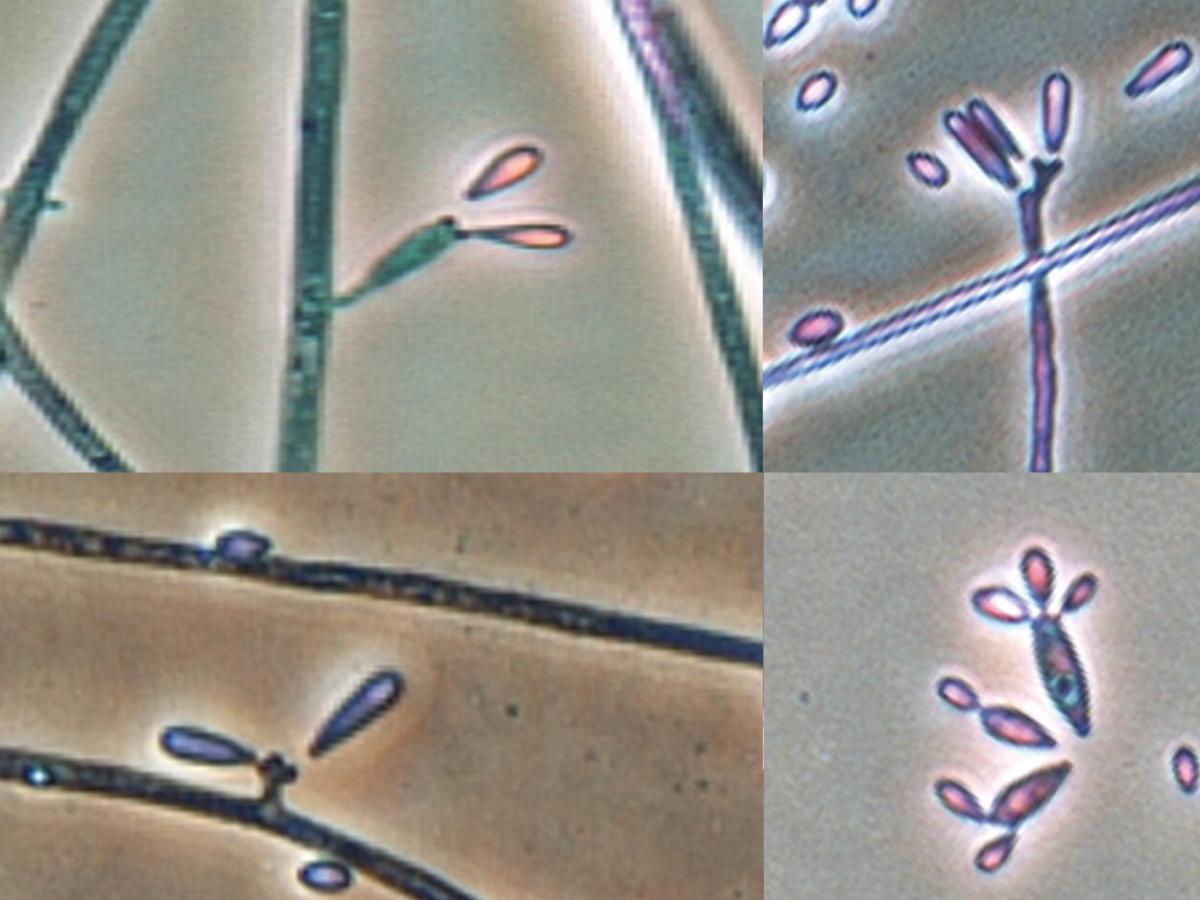Quambalaria cyanescens
Synonymy:
Sporothrix cyanescens; Cerinosterus cyanescens
The genus Quambalaria contains five species, including Q. cyanescens, Q. pitereka, Q. eucalypti, Q. coyrecup and Q. simpsonii. Q. cyanescens is a hyaline basidiomycete isolated from a broad range of ecological niches, including air, soil, and insect larvae as well as in association with diverse plant sources, including Corymbia and Eucalyptus species from Australia.
Quambalaria cyanescens appears to be an emerging opportunistic pathogen in immunocompromised or debilitated individuals. It has been isolated from human skin and subcutaneous infections, blood, nosocomial infections in patients with pneumonia, peritonitis and invasive pulmonary infection (Jackson et al. 1990, Tambini et al. 1996, Schmidt et al.2000, Kuan et al. 2015).
RG-1 organism.

Culture of Quambalaria cyanescens.
Morphological description:
Colonies are restricted, farinose or velvety, often compact and somewhat cerebriform, snow-white, and later often exuding a pH-dependent, deep blue/violet pigment into the agar. Conidiogenous cells are undifferentiated, cylindrical, of variable size (1.5-3.0 µm wide), apically with a cluster of small denticles, the cluster often repeatedly proliferating and forming similar clusters. Conidia are hyaline, smooth-walled or finely verrucose, obovoidal, 3-4 µm long, somewhat larger (3.5-6.5 µm long) when bearing secondary conidia.
Molecular identification:
ITS and D1/D2 sequencing recommended.

Quambalaria cyanescens conidiogenous cells with small denticles and conidia, and mature conidium bearing secondary conidia.
Key features:
Q. cyanescens is similar to Sporothrix, but the conidial scars are very small and cultures are thin and fragile. In fresh cultures the diffusible pigment is characteristic. Sporothrix schenckii forms tough colonies, which finally become blackish-brown.
References:
de Hoog and de Vries (1973), de Beer et al. (2006), Simpson (2000), de Hoog et al. (2015).
| Antifungal | No | ≤0.016 | 0.03 | 0.06 | 0.125 | 0.25 | 0.5 | 1 | 2 | 4 | ≥8 |
|---|---|---|---|---|---|---|---|---|---|---|---|
| AMB | 33 | 1 | 9 | 8 | 14 | 1 | |||||
| ISAV | 6 | 5 | 1 | ||||||||
| VORI | 33 | 16 | 10 | 5 | 1 | 1 | |||||
| POSA | 32 | 7 | 9 | 14 | 1 | 1 | |||||
| ITRA | 35 | 2 | 5 | 12 | 10 | 1 | 2 | 1 | 2 |
